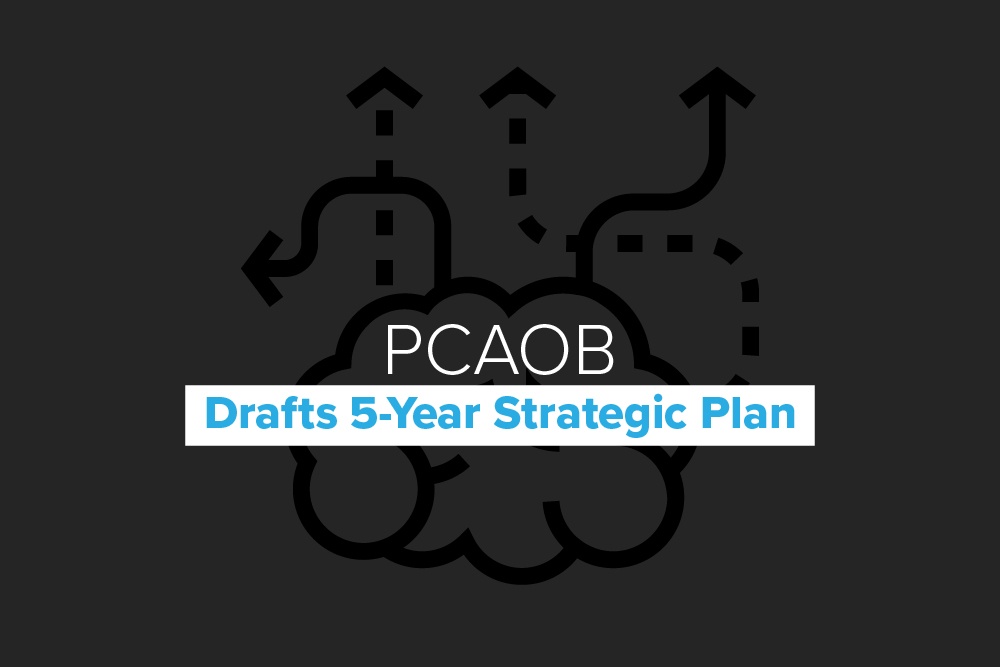Your friends at Embark understand that time is of the essence. Even something as important as the hot-off-the-presses Strategic Plan from the Public Company Accounting Oversight Board (PCAOB) might have a tough time fitting into your stuffed schedule. So what’s a fine accountant such as yourself to do when there’s information to be absorbed but nary a moment to spare? Well, you rely on Embark, of course, to provide the critical information in a bite-sized morsel that fits well into your day. Once again, you’re welcome.
 Five-Year Strategic Plan
Five-Year Strategic Plan
Since its inception in 2002, the PCAOB has seen a number of different leaders and initiatives pass through its doors that, collectively, helped propel the organization and drive its evolution to the forward-looking stalwart it is today. Differing from previous years, the PCAOB expanded its perspective when forming its five-year Strategic Plan for 2018 - 2022. Rather than adopting an insular approach, the committee actively sought outside opinion, even hiring a strategy consultant to broaden its view and take a far more comprehensive stance in its aim and mission. To that point, the following three key factors and goals formed the basis for 2018’s Strategic Plan, as determined by the committee, employers, and stakeholders:
- Further improvement in the quality of audit services, extending the improving trends realized industry-wide since the formation of the PCAOB
- Anticipate and appropriately respond to the rapid advancement of disruptive technologies that are quickly transforming the landscape
- Increase engagement and enhance communication with stakeholders that rely on timely, relevant, and accurate information to make well-informed decisions
With these key factors in mind, the PCAOB established a series of five goals to form their 2018 Strategic Plan, each with a corresponding set of objectives to guide their direction and gauge their progress over the next five years.

1. Utilize a combination of prevention, detection, deterrence, and remediation to continue to drive improvement in audit services, adopting a forward-looking approach that’s guided by four objectives:
- Communicate more timely and relevant feedback to stakeholders by conducting inspection activities based on robust economic, risk, and data analysis
- Let economic and risk analysis better inform standards, rules, and guidance
- Uphold accountability standards for all individuals and firms in violation of PCAOB rules and related federal securities laws through enhanced collaboration with the SEC
- Identify, foster, and properly communicate all audit quality indicators, mainly from data found during inspections

2. Anticipate and assess the impact of new technologies and how they might affect the quality of audit services. Three objectives will help the PCAOB find a balance between risk assessment of emerging technologies and fostering innovation to improve efficiency, accuracy, and reliability:
- Gauge and adequately address the effect emerging technologies will have on audit services, weighing any and all risks versus the improved efficiency and effectiveness of reporting in the audit process as a whole.
- Always understand and take into consideration investor expectations regarding the audit process
- Continually assess the evolving IT security environment and understand the related risks involved with new technologies

3. Embrace a more proactive approach to stakeholder engagement to improve transparency and accessibility, using two main objectives as the basis:
- Improve the immediacy, utility, and clarity of information distributed by the PCAOB to investors and other stakeholders, including the release of relevant analysis for use by researchers as well as the general public
- Create and maintain effective, dynamic communication with stakeholders regarding the quality of audit services

4. Constantly strive for operational excellence through the best use of PCAOB resources, data, and technology, utilizing four objectives to help reach that goal:
- Improve risk assessment and management, operational processes and capabilities, and embrace the tenants of effective change management
- Gather, analyze, and utilize data to streamline internal processes and better inform PCAOB decision-makers to increase accountability and create more effective operational strategies
- Optimize the PCAOB IT infrastructure, implementing new technologies when warranted to strengthen capabilities and, where feasible, consolidate and automate internal processes

5. Enhance the PCAOB culture, empowering and rewarding team members to help accomplish both individual and organizational goals through three main objectives:
- Concentrate on recruitment, retention, development, and performance management to strengthen the organization and make the most of PCAOB talent
- Create a reward system that stimulates teamwork, collaboration, transparency, and engagement
- Foster a diverse culture that fully utilizes the collective experience and perspectives of all PCAOB employees
So there you go. Now you have all the talking points of an important document that will, in part, shape the future of audit services, all without further straining your tight schedule or forlorn retinas. By now, we hope you know that Embark will work tirelessly to provide our financial brethren vital information that impacts the landscape, the 2018 PCAOB Strategic Plan being a perfect example. Now that you know what to expect over the next five years, start fine-tuning your own short and long-term strategies to make certain you're always well-informed and make sound decisions.








